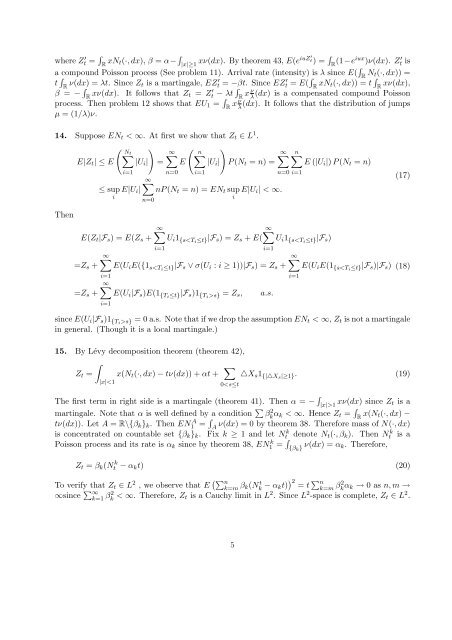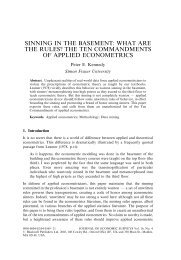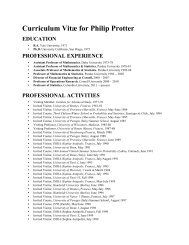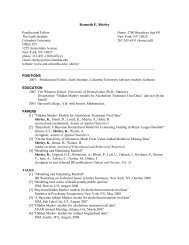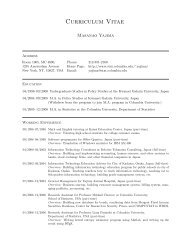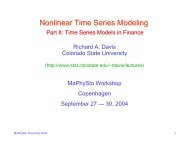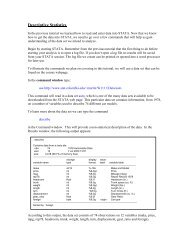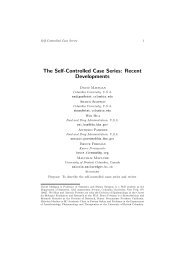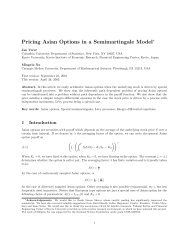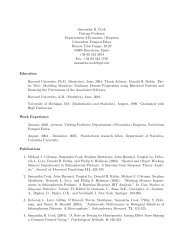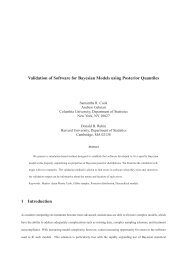Solution to selected problems.
Solution to selected problems.
Solution to selected problems.
Create successful ePaper yourself
Turn your PDF publications into a flip-book with our unique Google optimized e-Paper software.
where Z t ′ = ∫ R xN t(·, dx), β = α− ∫ |x|≥1 xν(dx). By theorem 43, E(eiuZ′ t ) =<br />
∫R (1−eiux )ν(dx). Z t ′ is<br />
a compound Poisson process (See problem 11). Arrival rate (intensity) is λ since E( ∫ R N t(·, dx)) =<br />
t ∫ R ν(dx) = λt. Since Z t is a martingale, EZ t ′ = −βt. Since EZ t ′ = E( ∫ R xN t(·, dx)) = t ∫ R xν(dx),<br />
β = − ∫ R xν(dx). It follows that Z t = Z t ′ − λt ∫ R x ν λ<br />
(dx) is a compensated compound Poisson<br />
process. Then problem 12 shows that EU 1 = ∫ R x ν λ<br />
(dx). It follows that the distribution of jumps<br />
µ = (1/λ)ν.<br />
14. Suppose EN t < ∞. At first we show that Z t ∈ L 1 .<br />
(<br />
Nt<br />
)<br />
)<br />
∑<br />
∞∑<br />
E|Z t | ≤ E |U i | = E |U i | P (N t = n) =<br />
Then<br />
≤ sup<br />
i<br />
i=1<br />
E|U i |<br />
∞∑<br />
n=0<br />
E(Z t |F s ) = E(Z s +<br />
i=1<br />
n=0<br />
( n∑<br />
i=1<br />
nP (N t = n) = EN t sup E|U i | < ∞.<br />
i<br />
∞∑<br />
n=0 i=1<br />
∞∑<br />
∞∑<br />
U i 1 {s


